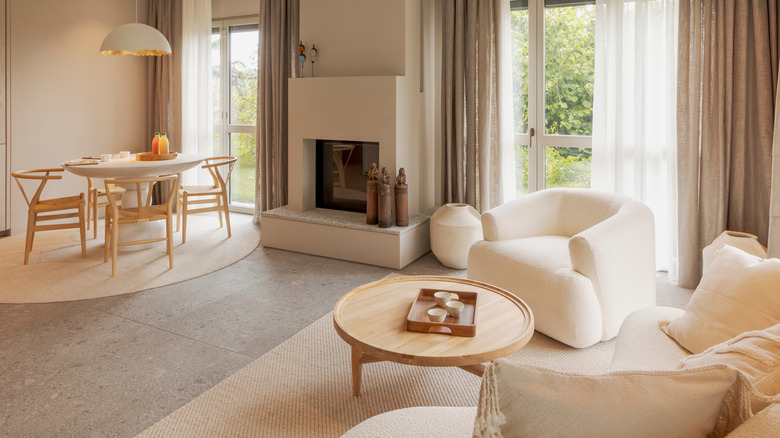The Art of Creating a Cohesive Interior
When it comes to designing a space that feels both beautiful and functional, having a plan is essential. A well-thought-out approach ensures that color palettes, textures, and details work together in harmony. It also helps create a sense of intentionality and balance throughout the home. However, the key to achieving a harmonious interior lies not in rigidly following design rules or trying to replicate a “perfect” look, but in embracing individuality and personal expression.
One common mistake people make is focusing too much on perfect color coordination or using matching sets to achieve cohesion. While these elements can contribute to a balanced space, an over-reliance on them can lead to a stiff and uninviting environment. This approach often results in a space that looks forced rather than curated, which can be noticeable to others as well.
Design trends are constantly changing, and while they can offer inspiration, they shouldn’t dictate your entire decor strategy. Following fleeting trends may lead you to purchase mass-produced items that quickly go out of style. Instead of chasing the latest fads, focus on collecting pieces that reflect your personal taste and history. These items will naturally blend together over time, creating a more authentic and tailored look.
Avoiding Overly Symmetrical Designs
Symmetry has long been considered an important aspect of interior design, but when taken to an extreme, it can create a sense of rigidity. For example, hanging identical photo frames side by side or placing twin table lamps on either end of a sofa might seem balanced, but it can also feel predictable and uninspired. Rather than relying on symmetry for balance, consider how different elements interact with each other in a more organic way.
Curation is a more thoughtful and intentional approach to decorating. It involves selecting pieces that complement each other based on texture, pattern, and mood. For instance, when choosing a sofa, think about how its fabric will pair with the tile in the living room. Consider how layering different patterns and textures can enhance the overall atmosphere of the space.
Embracing Personal Expression
A truly curated space is one that reflects the personality and lifestyle of its occupants. This means incorporating items that have meaning, whether they’re heirlooms, handmade objects, or unique finds from local markets. These pieces add character and depth to a room, making it feel more lived-in and personal.
Rather than focusing on a checklist of design elements, take the time to thoughtfully select each item. Ask yourself how each piece contributes to the overall aesthetic and functionality of the space. This process not only leads to a more cohesive look but also creates a deeper connection between the homeowner and their environment.
Final Thoughts
Creating a beautiful and balanced interior doesn’t require perfection or strict adherence to design rules. It’s about finding a balance between structure and spontaneity, and allowing your personal style to shine through. By avoiding overly symmetrical arrangements, resisting the urge to follow every trend, and focusing on curation, you can create a space that feels authentic, inviting, and uniquely yours.







